If your car has started to misfire or you’ve noticed a decrease in fuel efficiency, it may be time to change your spark plugs. This routine maintenance task is relatively simple and can save you money in the long run by preventing more serious engine problems. However, it’s important to follow a few tips to ensure that you’re changing your spark plugs correctly and safely. In this article, we’ll discuss the steps you must take when changing spark plugs and some common mistakes to avoid.
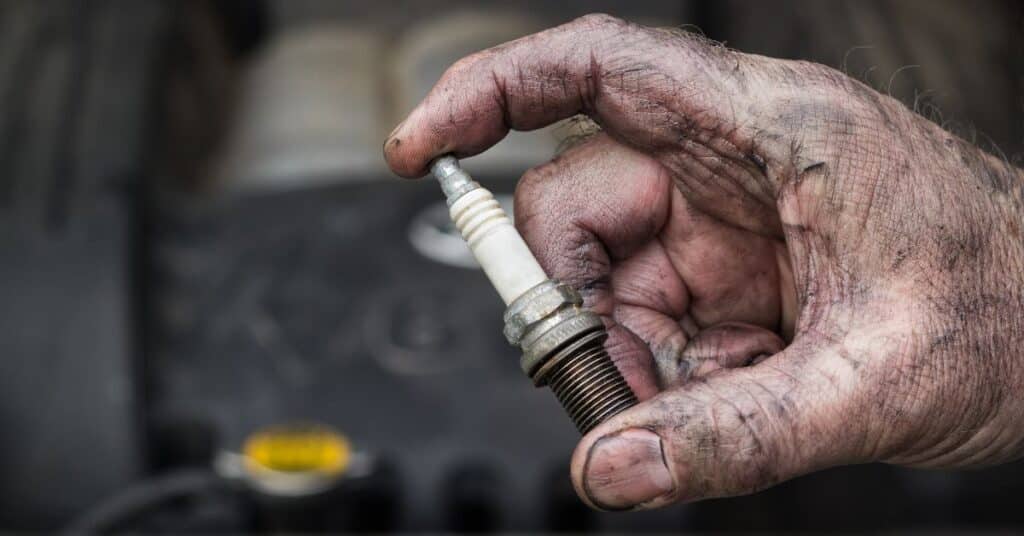
Why Changing Spark Plugs is Important
Spark plugs play a crucial role in your car’s engine performance. They ignite the fuel and air mixture in the combustion chamber, which powers the engine. Over time, spark plugs can become dirty, worn, or damaged, resulting in decreased fuel efficiency, engine misfires, and even engine damage. Changing your spark plugs at regular intervals can help maintain your engine’s performance and reliability.
When to Change Spark Plugs
The recommended interval for changing spark plugs can vary depending on the make and model of your car. However, a good rule of thumb is to change them every 30,000 to 50,000 miles. If you’re experiencing engine problems, such as misfires or a decrease in fuel efficiency, it may be time to change your spark plugs even if you haven’t reached the recommended mileage interval.
How To Change Spark Plugs and Wires: Steps for Changing Spark Plugs
If you’re not confident in changing spark plugs or have never done it before, it’s always a good idea to consult a professional mechanic. However, if you’re up for the challenge and want to save some money by doing it yourself, here are the basic steps for changing spark plugs:
Preparing for the Job
First, park your car on a flat surface and let the engine cool down for at least 30 to 60 minutes. It’s important to work with a cold engine, as the spark plug area can become very hot during operation.
Gather all the necessary tools and locate the spark plugs in your engine.
Tools You’ll Need To Change Spark Plugs
Before you get started, you’ll need to gather a few tools. Here’s a quick checklist:
- Spark plug socket
- Socket wrench
- New spark plugs
- Torque wrench
- Anti-seize compound
- Spark plug gap tool or feeler gauge
Your owner’s manual helps you find them, and it’s a good idea to take a photo or make a diagram of the spark plug wire routing before removing them. However in worst case follow this guide if you having difficulties putting spark plug wires in correct order.
Disconnect The Battery
Disconnecting the battery is always a good idea before doing any kind of repair or installation of new components in the engine as a safety precaution. By disconnecting the battery, you can avoid the risk of electrical shock or damage to your car’s electrical system. To disconnect the battery, simply locate the negative terminal and use a wrench to loosen the nut holding the cable in place. Once the cable is disconnected, you can safely remove the spark plugs without any risk of electrical shock or damage.
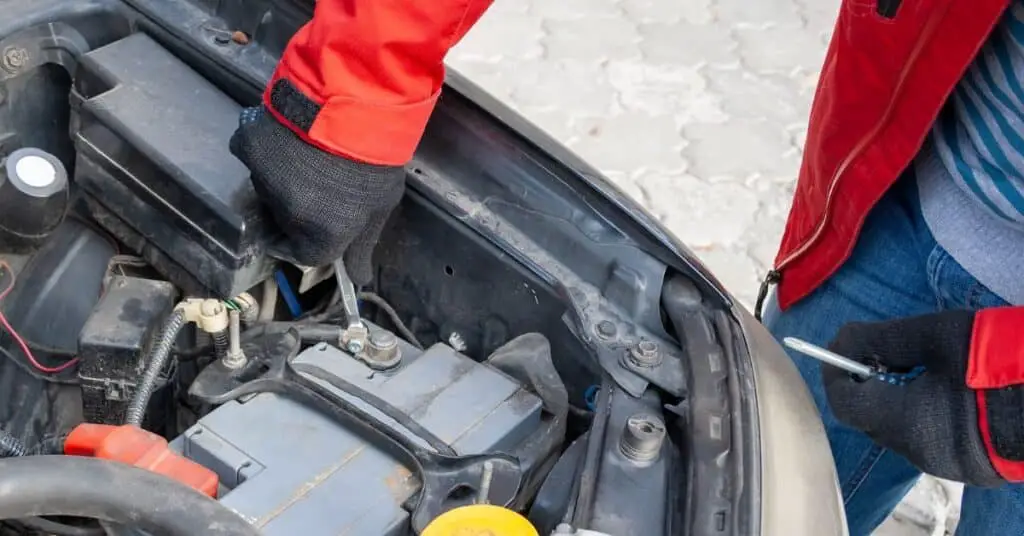
Finding and Identifying the Spark Plugs in Your Car’s Engine
- Consult your owner’s manual: The location and number of spark plugs can vary depending on the make and model of your car. Your owner’s manual should have information on where to find the spark plugs and how many there are.
- Look for the spark plug wires: Most modern cars have ignition coils that connect directly to the spark plugs, so you may not see the plugs themselves. Instead, look for a series of thick wires (usually four, six, or eight) that run from the ignition coils to each spark plugs under the hood in the engine compartment. These wires are attached to the spark plug cap, which sits on top of the combustion chamber and screws into the cylinder head.
- Follow the wires: Once you’ve located the spark plug wires, follow them to each of the spark plugs. Depending on the layout of your engine, this may require removing a cover or other components to access the plugs.
- In certain engine configurations, such as those with coil-on-plugs (COP), the spark plug wires are not used, and the coils sit directly on top of the plugs.
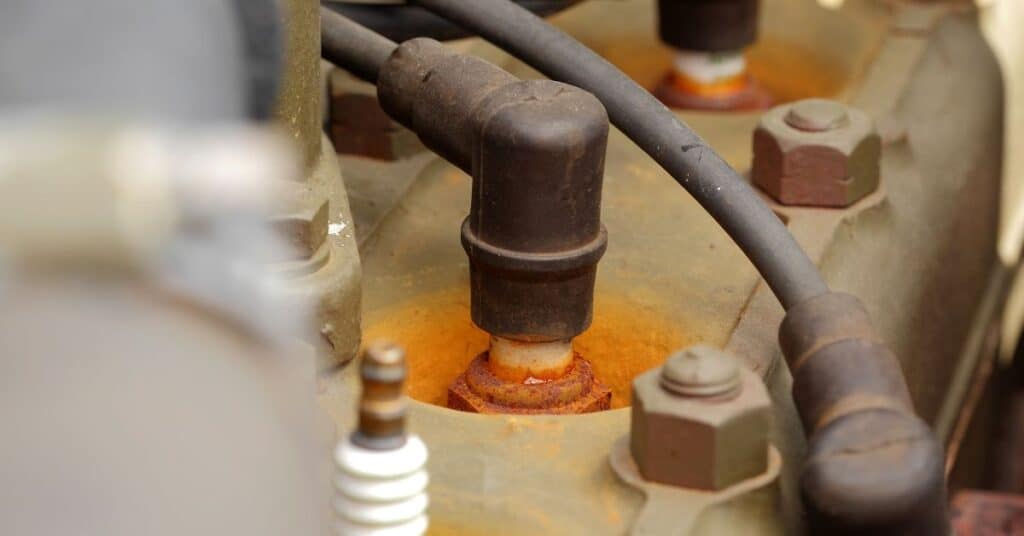
Removing Old Spark Plugs
To remove your vehicle’s old faulty spark plugs, start by disconnecting the wires from the plugs and inspecting them to ensure there is no debris or water above them. Then, use a spark plug socket with a socket wrench to turn counterclockwise and loosen the plugs. Magnetic sockets are useful, but there are other types available as well.
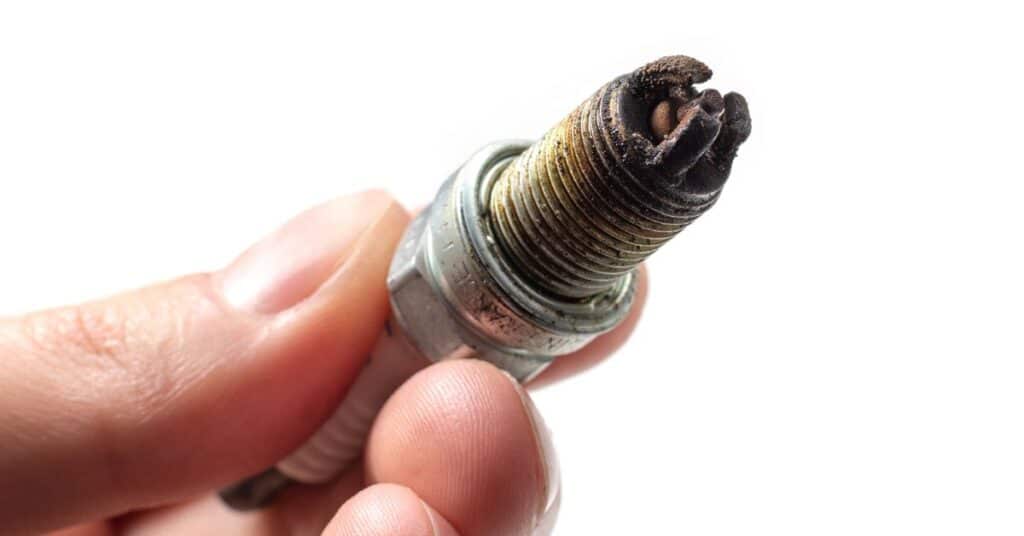
If your vehicle utilizes a Coil-on-Plug (COP) system, carefully pull the electrical connector upward to detach it from the ignition coil. Remove the wiring connector from the coil. COPs typically have a removable rubber boot and springs that cover the spark plug. If the spark plug boot does not come off the plug when removing the coil, you may need to use needle-nose pliers to detach it carefully.
Once you have removed the spark plugs, inspect them for any signs of damage, wear, or deposits. Also, clean the area around the spark plug hole to prevent debris from entering the engine.
Inspecting The Old Spark Plugs
When inspecting the old spark plugs, look for worn electrodes that may appear rounded instead of flat. Also, check the plug gap using a tool to ensure that it matches the recommendation in your owner’s manual.
The gap is the distance between the central and ground electrode of the spark plug. A spark plug gap gauge or feeler gauge is essential for checking and adjusting the gap.
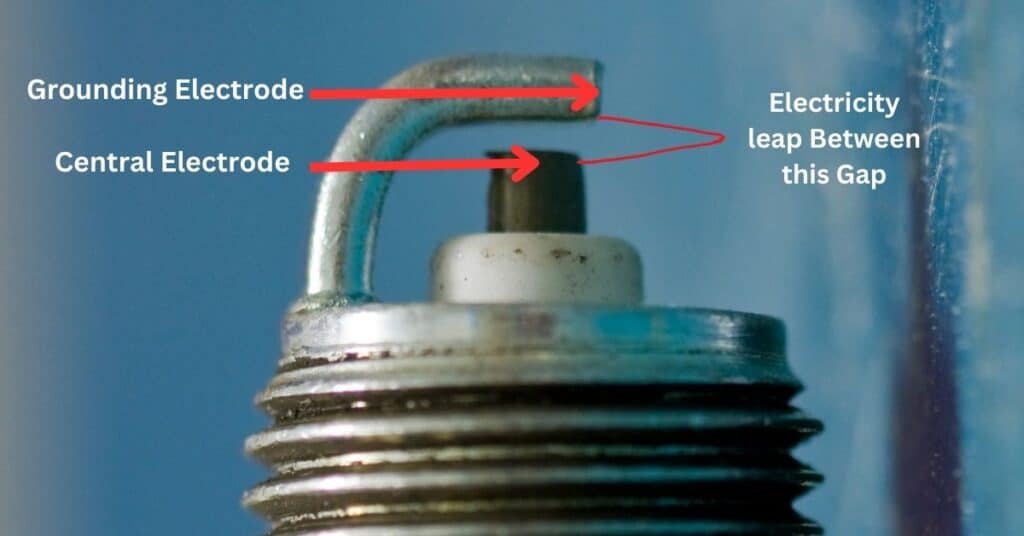
If the center electrode is still relatively even and in good shape, the plug may not need to be replaced. However, keep in mind that spark plugs are relatively inexpensive and play a vital role in your car’s health, so it’s best to replace them within the specified maintenance window regardless of their appearance.
In addition, you need to inspect the area around the spark plug tip for oil fouling or carbon deposits, check the gasket the plug uses to seal with the head and ensure that the electrode insulator has not fractured. If the spark plug has a significant amount of carbon buildup, oil, or petrol on it, it is a symptom of a more serious problem that must be diagnosed.
If you want to clean your spark plugs, use a non-metallic brush to lightly rub away any dirt, then spray the plug with a brake or carburetor cleaner and wipe it dry. Never use a sandblaster to clean spark plugs.
If your spark plugs are too old or in bad shape, replacing them with new ones is best. Luckily, replacing spark plugs is a relatively simple process that can be done with a few basic tools. Applying an anti-seize compound to their threads prevents new plugs from seizing in the cylinder head.
Choosing the Right Spark Plugs
Choosing the correct spark plugs is essential to ensure the optimal performance of your vehicle. It is crucial to use the ones recommended by the manufacturer. For example, you can purchase OEM NGK plugs. It’s worth noting that NGK recommends not using any anti-seize compounds on the plugs. The lubricant can cause over-torquing, leading to potential damage. Additionally, NGK plugs have a zinc shell plating that helps prevent seizure to the cylinder head and corrosion.
If you decide to go for cheaper plugs with a darkened or dull appearance, it is essential to use anti-seize. Such plugs typically do not have a special plating, which makes them more prone to corrosion and seizure. By using anti-seize, you can ensure that the plugs will come out easily during the next replacement without damaging the cylinder head.
Installing New Spark Plugs
When installing new spark plugs, it’s crucial to check the gap to ensure it is within the manufacturer’s specifications. Use a spark plug gap tool to adjust the gap if necessary.
It’s best practice to use a torque wrench when installing the plugs to avoid damaging the cylinder head. Hand-tighten the plug to get it started, and install the plugs on a cold cylinder head to reduce the risk of cross-threading. Once they’re finger-tight, use a spark plug socket and ratchet or torque wrench to tighten each spark plug to the specifications listed in your vehicle’s owner’s manual.

Over-tightening can damage the threads or break the spark plug, while under-tightening can cause the spark plug to become loose or malfunction.
Before inserting the new spark plugs, apply a small amount of dielectric grease to the inside of the wire where it fits over the ceramic portion of the spark plug. This will prevent them from getting stuck and make it easier to remove them in the future. It also ensures that the current from the wire only sparks at the spark plug’s electrodes. Carefully insert the new spark plugs into the spark plug hole using a socket.
Reconnecting the Ignition Coils or Spark Plug Wires
Reconnect the ignition coils or spark plug wire boots to the new spark plugs. Ensure that they are connected securely and in the correct order.
Completing the Job
Once the new spark plugs are installed, double-check everything to ensure that all connections are secure and that no loose wires or tools are left in the engine bay. Reconnect the battery and start the engine. Listen for any abnormalities, such as a rough idle, misfiring, or unusual sounds. If you notice any issues, investigate further before taking the car on a test drive. If everything sounds good, take your car for a test drive to ensure everything is working correctly.
Additional Tips
- To maintain optimal engine performance, it’s important to schedule routine maintenance, including
- checking and replacing spark plugs as recommended by the manufacturer.
- Using high-quality spark plugs can also make a significant difference in performance and fuel efficiency.
- Additionally, if you notice any problems with other ignition components, such as ignition coils or wires, it’s a good idea to have them replaced as well.
Common Mistakes To Avoid
Changing spark plugs is a relatively simple task, but there are a few common mistakes that can cause problems down the road. Here are a few things to avoid:
- Over-tightening or under-tightening the spark plugs
- Cross-threading the spark plug threads.
- Mixing up the ignition coils or spark plug wires.
- Failing to check the spark plug gap before installation.
- Reusing old spark plugs that are worn or damaged.
Conclusion
Inspecting and replacing spark plugs is important to maintaining your car’s engine. With a few simple tools and some patience, most car owners can do it themselves. Proper maintenance can keep your car running safely and efficiently, so don’t neglect this crucial task.
By following the listed steps, you can change the spark plugs on your vehicle successfully. However, if you encounter any issues or are unsure about any steps in the process, it’s always best to seek the help of a professional mechanic.
FAQs
How often should I change my spark plugs?
A good rule of thumb is to change them every 30,000 to 50,000 miles but check your car’s owner’s manual for specific recommendations.
How do I know when it’s time to change my spark plugs?
Look for decreased fuel efficiency, engine misfires, or other engine problems.
Can I change my own spark plugs?
Yes, changing spark plugs is a relatively simple task that can be done at home with the right tools and instructions.
How do I choose the right spark plugs for my car?
Consider factors such as your car’s make and model, the engine type, and the recommended spark plug gap.
Last Updated on June 12, 2025 by Rifen
